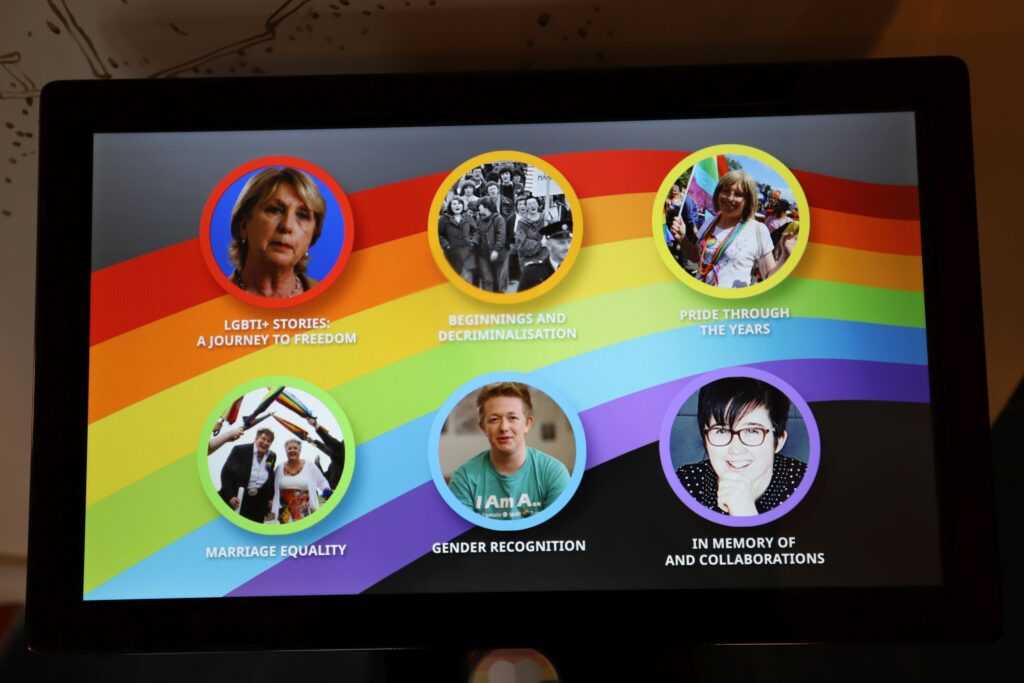Irish LGBTI+: a history
National Museums tell the national stories. Local museums tell the local or county version of that national story, with all its local nuances. In other words, museums give us an insight into how a local community views itself. It suggests that to be not included in the story could leave you feeling excluded from society. It could say you don’t matter.
In March 2019, the Rainbow Revolution Exhibition was launched at the National Museum of Ireland in Collins Barracks, Dublin. The exhibition displayed a series of new artefacts that relate to some of the most memorable moments in the LGBTI+ movement in Ireland in recent years. It included a trail through the exhibitions at Collins Barracks, that highlighted noteworthy members of the LGBTI+ community from early mythology to current day. It also included a video series of oral histories gathered from members of Ireland’s LGBTI+ community. In doing so, for the first time, it embraces this community as part of who we are as Irish people.
These oral histories provided the material for a digital podium on display at Clare Museum. It tells the story of the LGBTI+ community in Ireland over the last 50 years. The NMI has provided all Local Authority Museums with an audio-visual touch screen we call a digital podium. Clare Museum received its one recently and it is now available for viewing at Clare Museum, and it is easy to use.
The stories are told under the following themes of headings.
- Irish LGBTI+ Stories: a journey to freedom
- Beginnings and decriminalisation
- Pride through the years
- Marriage equality
- Gender recognition
- In Memory of and collaborations
Irish LGBTI+ Stories: a journey to freedom.
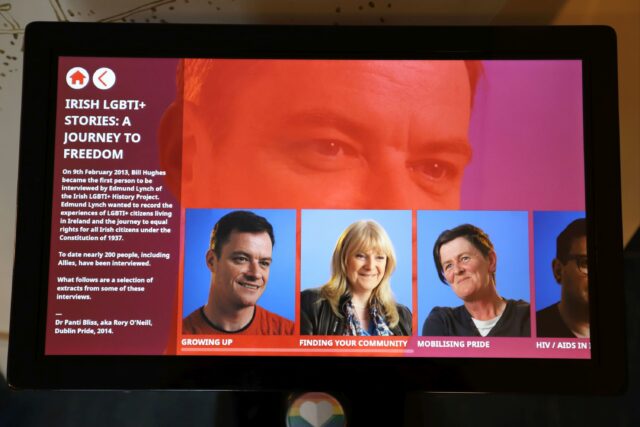
In 2013 the Irish LGBTI+ History project began recording the experiences of LGBTI+ citizens living in Ireland and the journey to equal rights for all Irish citizens under the Irish Constitution of 1937. About 200 people have been interviewed for the project, and the digital podium includes a selection of those interviews.
Ireland’s LGBTI+ movement
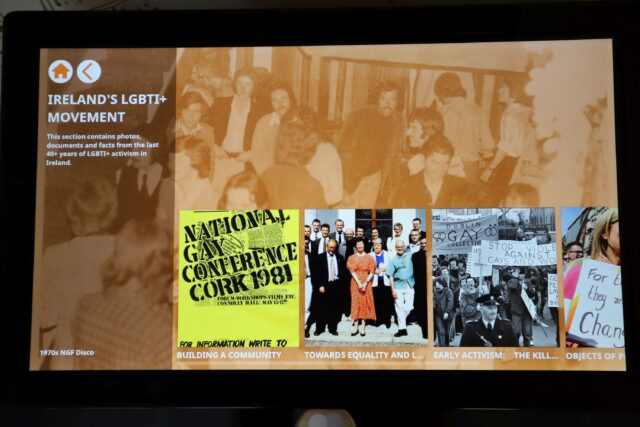
This section contains photographs, documents and facts from the last 40 years of LGBTI+ activism in Ireland.
Pride through the years

This section tells the story of the Stonewall Riots in New York, USA in June 1969, which are widely considered to be the catalyst of LGBTI+ Activism. Combined with the 1980s murders of Charles Self and Declan Flynn in Ireland, it led to the first LGBTI+ Pride March in Dublin in June 1983.
Marriage equality
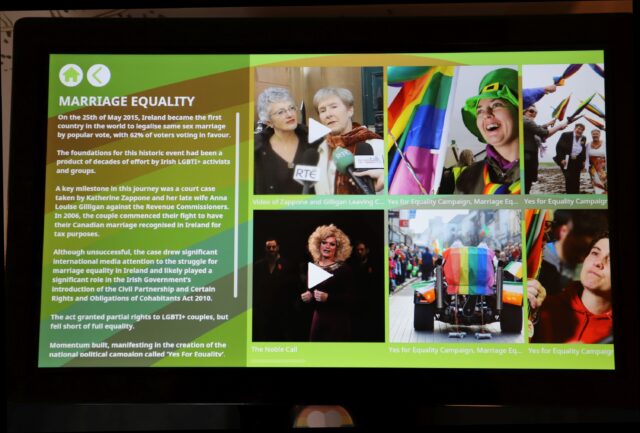
How Ireland became the first country in the world to legalise same sex marriage by popular vote, in May 2015.
Gender equality
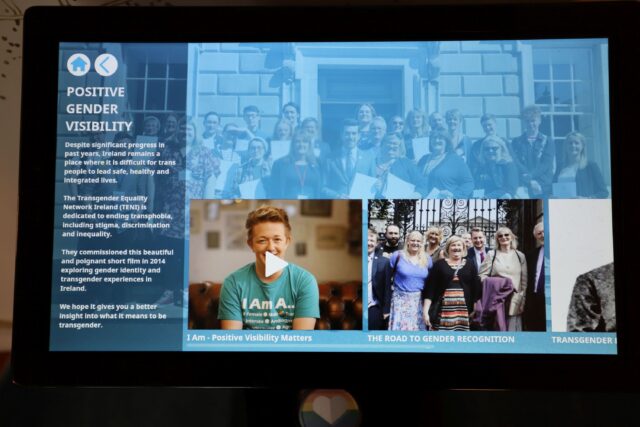
This section gives an insight into what it means to be transgender.
In memory of and collaborations

The project is a collaboration between the National Museum of Ireland various archival collections, and it remembers Lyra McKee, John Hanna and other activists who passed away at a young age.
The LGBTI+ history of Clare
In the opening paragraph, we mentioned how representation in a museum collection can be indicative of who is part of the ‘in’ group in society. There is a gap in our collection at Clare Museum that needs to be filled with objects and stories from Clare’s LGBTI+ community. If you have any objects, photographs, posters or any anything else associated with Clare’s part in the LGBTI+ story of Ireland, we would love to have them, along with the stories that go with them, to keep for posterity.
It will be important for society and in particular the LGBTI+ community in the future to understand the sacrifices that were made by those who went before them so they could have equal status in our community.
The curator can be contacted at claremuseum@clarecoco.ie
